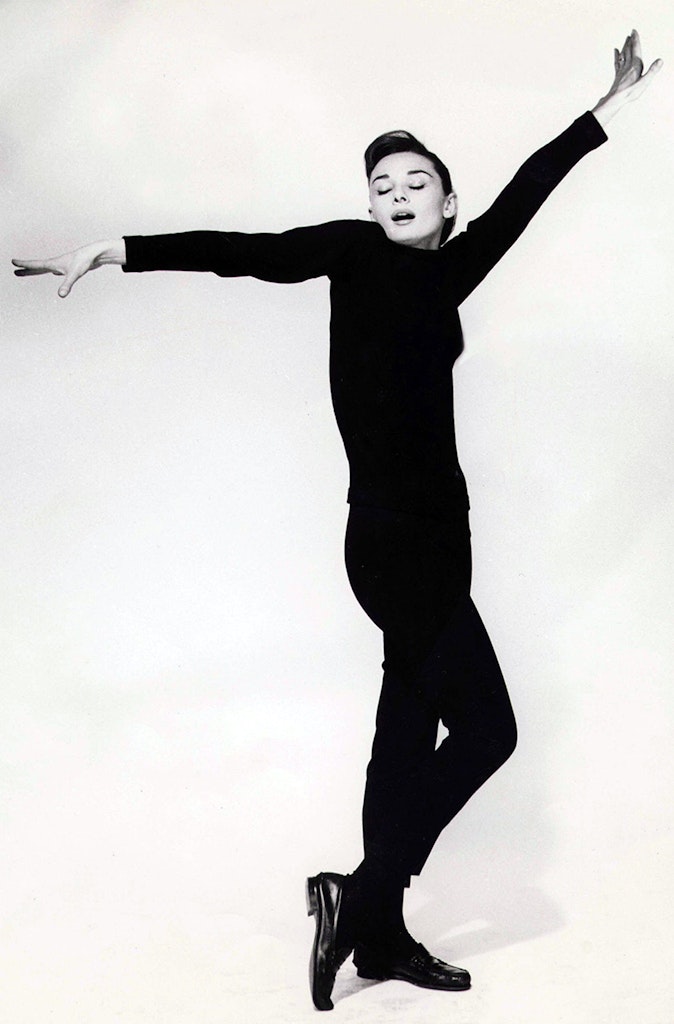Comfort zone
Hannah Betts chooses chic alternatives to dull sweatpants
This article is taken from the January/February 2021 issue of The Critic. To get the full magazine why not subscribe? Right now we’re offering three issue for just £5.
And so farewell, then, 2020, the year in which the human race found it was not so much over dressing as over life itself. People have purchased two items of clothing during the last 12 months: sweatpants and pyjamas.
Accordingly, a national jogging-bottom shortage has been declared, the chief executive of online giant Asos predicting this crisis will continue until spring. Meanwhile, Google reports an 110 per cent rise in pyjama searches since the beginning of lockdown II, with Matches’s PJ sales up 150 per cent.
Loungewear for the masses is a relatively recent phenomenon
Loungewear: it used to mean Noël Coward in a silk dressing gown, now it means a look that screams care in the community. Can there be leisurewear that doesn’t make one want to top oneself? Why do we crave some liminal zone between the dressed and the undressed? And what does our interior garb say about which we consider the more real of our lives: public or private, at home or abroad?
Time was when legions were wont to don ghastly, Next-style office wear for weekday drudgery, to blossom into themselves at weekends. Others would maintain full pomp in town, to retire into dilapidated repose in the wilds. Today, a kind of bland ease has enveloped all, in and out merged in a banal sweatpantery.
Loungewear for the masses is a relatively recent phenomenon, as Historic Royal Palaces curator Eleri Lynn explains:
Until the mid-twentieth century ‘leisure’ is only something the upper classes could afford, so leisurewear was something you’d find in aristocratic households. We start to see loungewear in the Tudor period, partly to do with the magnificence of their formalwear. Court records show that both Henry VIII and Anne Boleyn ordered ‘dressing gowns’. Warm, possibly fur-lined, trimmed with velvet, they’d have been worn when they removed their highly-structured clothing, but needed outfits for socialising with their intimates.
Fashion historian Hilary Davidson lives for a banyan, the loose, gorgeously decorated robes introduced by the Dutch and British East India Companies in the seventeeth century, that had become the thing to be seen in by the eighteenth. “Women relaxed in bedgowns and jumps,” notes Davidson, “soft quilted versions of the stiffly-boned stays that gave them fashionable shape. Regency people receiving visitors would wear ‘morning dress’ — less formal versions of fashionable styles, covering more of the body and made of less fancy fabrics.
“By Victoria’s reign, men changed into unstructured velvet smoking jackets, with a fez and woolwork slippers. As the aesthetic movement took off, flowing, quasi-medieval tea gowns gave middle-class women an escape from stiff, corseted garb. Once Meiji Japan opened up after 1868, a flood of kimono sparked a Japonisme trend.” In the Thirties, female evening pyjamas morphed into leisure trousers, while Fifties lotus eaters donned “hostess gowns”, full-skirted numbers for entertaining at home.
As for what is acceptable now, Helena Bonham Carter once told me she advocates bloomers. An entire coven of cool chics can be spotted sporting Spry Workwear’s boilersuits (from £185).

The New York Times recently recommended German minimalist Jil Sander’s Uniqlo collection by way of domestic “soft power dressing”, plus something it called “Chore Coats” for chaps. Dior’s current advertisements feature ethereal beauties slumbering in Grecian goddess gowns. And the all-in-oneness of frocks does make them ideal for lolling, as NRBY, the hanging-about-one’s-hood specialists, will testify.
Sweatpants make me want to die
Kimonos, smoking jackets and the like need to be unslept in and accessorised with slap, scent and rocks, or you’ll feel too schlumpy. Posh pyjamas reappeared on catwalks in spring/summer 2016 everywhere from Dolce to Celine. Brands such as Sleeper, Yolke and Olivia von Halle took flight in their wake, for the kind of girl who thinks nothing of lobbing 500 quid at a pair of pjs. Or try £1,475 for a For Restless Sleepers velvet dressing gown. I want to be this woman, but I am just too Birmingham. My own glamjams are £19.99 via Amazon.
Just not sweatpants, please God, not sweatpants. Sweatpants make me want to die. As Kaiser Karl (Lagerfeld) once decreed: “Sweatpants are a sign of defeat. You lost control of your life so you bought some sweatpants.”
Asked recently whether he’d ever donned the dread garment, Tom Ford replied: “I don’t feel well in knitwear, it’s a little too soft for me. I feel better in something a bit harder. I feel too vulnerable in sweatpants.”
You and me both, Tom, you and me both. There must be a degree of structure, or one feels as if one is melting. Cashmere, yes; velvet, sure; but also shape, sass. 
“Velour” is a word I would generally decry. However, Me & Em’s jet Velour Swing Top (above, £95) and Palazzo Pant (£125) are the only conceivable sweatsuit equivalent. The former boasts the suggestion of a ruff and puffed sleeve, the latter the necessary histrionic swag. Anne Boleyn would be mad for them.
Enjoying The Critic online? It's even better in print
Try five issues of Britain’s most civilised magazine for £10
Subscribe














